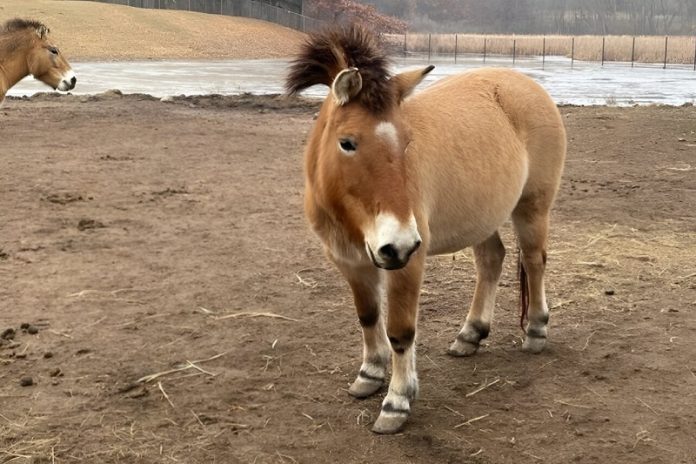
Researchers from the University of Minnesota have achieved a significant milestone by mapping the complete genome of the Przewalski’s horse, the last wild horse species.
This horse species was once extinct in the wild but now has about 2,000 animals thanks to dedicated conservation efforts.
The study, led by Nicole Flack and Lauren Hughes from the College of Veterinary Medicine, and Christopher Faulk, a professor at the College of Food, Agricultural and Natural Resource Sciences, was published in the journal G3: Genes, Genomes, Genetics.
Students from the university contributed to the genome sequencing as part of Faulk’s animal science course.
Faulk explained, “The genome is the basic blueprint for an animal and tells us what makes a species unique and about the health of a population. My students worked together to produce the highest quality Przewalski’s horse genome in the world.”
With this genome map, researchers can now make accurate predictions about gene mutations and their effects on the health and conservation of Przewalski’s horses.
Flack likened studying genes without a good reference to doing a 3-billion-piece puzzle without the picture on the box. “Researchers need a good reference picture to compare their puzzle with,” she said.
To create this genome map, researchers used a blood sample from Varuschka, a 10-year-old Przewalski’s mare at the Minnesota Zoo. The zoo has been involved in breeding and managing these horses, with over 50 foals born since the 1970s.
Anne Rivas, a veterinarian at the Minnesota Zoo, said, “We were excited to partner with the University of Minnesota to preserve the genetic health of the species. We are thrilled to offer our community the opportunity to see the horse as the result of our conservation efforts.”
The advanced sequencing technology used for this genome mapping involves a small, portable machine about the size of a soda can. This portability means it could be used for further studies of wild Przewalski’s horses in remote areas.
In the future, this reference genome can help researchers study genes that aid the horse in adapting to environmental changes, identify mutations linked to specific traits or diseases, and inform breeding decisions to improve genetic diversity.
Understanding the genetic makeup of Przewalski’s horses is crucial for their continued survival, especially considering the severe population decline they once faced. This research is a significant step forward in ensuring the health and diversity of this endangered species.



